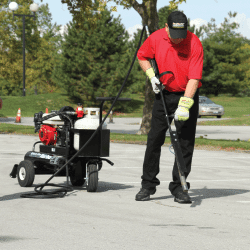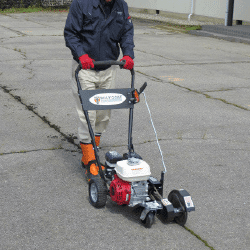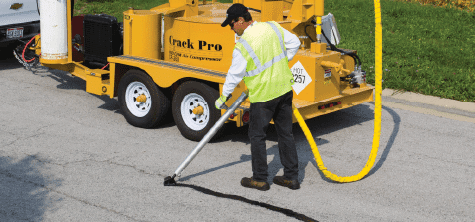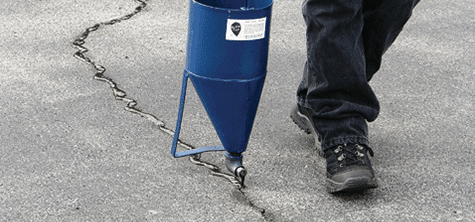Frequently Asked Questions
How to Repair Cracks in Asphalt Pavement
How to apply hot rubberized crack sealants
Ideally, hot rubberized crack sealants should be applied when the air temperature is between 45° and 65°F in geographic areas that are subject to cold winters. Cracks open up wider at cooler temperatures and contract or become narrower in warmer temperatures. It is advantageous to apply crack sealant when cracks are opened wider. However, in warmer southern climates, this becomes less important as cracks tend to not move or open up as much.
The crack sealant should be applied leaving a thin over-band of material on each side of the crack. Thick over-bands and material ridges should be avoided to avert snow plow damage in colder climates.




Weather conditions for cold applied materials should be warm and dry. Hot pour materials can be applied in cooler temperatures (as low as 40°F).
Cold applied materials should be allowed to cure for 24 hours prior to allowing traffic on surface. Hot pour materials should be allowed to cool for 15-20 minutes before allowing traffic.
Severely cracked areas of pavement may need to be removed and replaced with fresh hot mix asphalt. GatorPave from SealMaster is the ideal temporary solution for alligatored pavement.
A systematic program of pavement maintenance that includes periodic crack filling and sealcoating will more than double the life of asphalt pavement.
